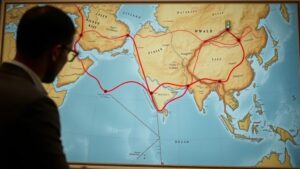Studying Historical Weather Events That May Have Shifted Buried Treasure
Studying Historical Weather Events That May Have Shifted Buried Treasure
The exploration of buried treasure has long fascinated historians, archaeologists, and treasure hunters alike. A less frequently discussed aspect is the influence of historical weather events on the location and condition of these treasures. This article examines significant weather events across history, their capacity to alter landscapes, and how these changes may have affected the burying and rediscovery of treasures.
The Impact of Weather on Treasure Locations
Weather phenomena, particularly severe storms, floods, and droughts, have profound effects on topography and soil composition. shifting of land can alter the locations where treasures may be buried and influence their rediscovery. For example, the 1938 New England hurricane not only devastated thousands of homes but also irrevocably changed coastal landscapes, revealing artifacts and shipwrecks previously hidden from view.
Historical Weather Events Influencing Buried Treasure
Several notable historical weather events significantly impacted buried treasures. Below, we discuss key instances highlighting these phenomena:
- The Great Galveston Hurricane (1900) – This hurricane remains one of the deadliest in U.S. history. It resulted in the loss of thousands of lives and changed the topography of Galveston Island. Many ships carrying goods and treasures were lost, creating opportunities for future treasure hunters to find remnants.
- The Ash Wednesday Storm (1962) – This storm caused extensive coastal erosion along the Mid-Atlantic States. Precious artifacts from shipwrecks were uncovered on beaches, providing insights into maritime history.
- The 1935 Florida Labor Day Hurricane – This hurricane devastated the Florida Keys, uprooting trees and changing sand dunes. Reports of a sunken Spanish ship carrying gold in the vicinity drew treasure hunters who utilized the landscape changes to pinpoint potential treasure locations.
Case Study: The Treasure of the Nuestra Señora de Atocha
A compelling case study reflecting the impact of weather events is the sunken Spanish galleon, Nuestra Señora de Atocha. In 1622, the ship was lost off the Florida Keys during a hurricane, carrying a fortune in gold and silver. Archaeological studies of the area revealed that shifting sandbars and underwater currents caused by subsequent storms revealed portions of the wreck in later decades, allowing treasure hunters like Mel Fisher to conduct successful recoveries in the late 20th century.
Climate Change and Future Treasure Hunting
In recent years, climate change has begun influencing weather patterns significantly, leading to increased flooding and severe weather events. For example, rising sea levels may unearth previously unreachable shipwrecks or alter landscapes where treasures are buried. This topic raises an important consideration for future archaeologists and treasure hunters regarding the potential for climate-induced discoveries.
Conclusion
The study of historical weather events provides invaluable insights into the field of treasure hunting and preservation. interplay between weather phenomena and buried treasures demonstrates how nature can reshape our understanding of history and increase the likelihood of discoveries. Understanding the historical context of these weather events can guide future treasure hunting efforts and inform preventive measures for conserving this heritage.
Actionable Takeaways
- Conduct extensive research on local historical weather events prior to starting treasure hunting ventures.
- Use advanced technology such as ground-penetrating radar and GIS mapping to identify potential treasure locations impacted by weather.
- Stay informed about climate change implications that may reveal new sites for treasure recovery.

